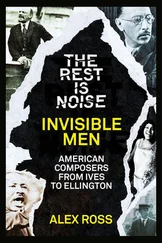So Salome came to Graz, an elegant city of 150,000 people, capital of the agricultural province of Styria. The Stadt-Theater staged the opera at the suggestion of the critic Ernst Decsey, an associate of Mahler’s, who assured the management that it would create a succès de scandale.
“The city was in a state of great excitement,” Decsey wrote in his autobiography, Music Was His Life. “Parties formed and split. Pub philosophers buzzed about what was going on ... Visitors from the provinces, critics, press people, reporters, and foreigners from Vienna ... Three more-than-sold-out houses. Porters groaned, and hoteliers reached for the keys to their safes.” The critic fueled the anticipation with a preview article acclaiming Strauss’s “tone-color world,” his “polyrhythms and polyphony,” his “breakup of the narrow old tonality,” his “fetish ideal of an Omni-Tonality.”
As dusk fell, Mahler and Strauss finally appeared at the opera house, having rushed back to town in their chauffeur-driven car. The crowd milling around in the lobby had an air of nervous electricity. The orchestra played a fanfare when Strauss walked up to the podium, and the audience applauded stormily. Then silence descended, the clarinet played a softly slithering scale, and the curtain went up.
In the Gospel of Saint Matthew, the princess of Judaea dances for her stepfather, Herod, and demands the head of John the Baptist as reward. She had surfaced several times in operatic history, usually with her more scandalous features suppressed. Strauss’s brazenly modern retelling takes off from Oscar Wilde’s 1891 play Salomé, in which the princess shamelessly eroticizes the body of John the Baptist and indulges in a touch of necrophilia at the end. When Strauss read Hedwig Lachmann’s German translation of Wilde—in which the accent is dropped from Salomé’s name—he decided to set it to music word for word, instead of employing a verse adaptation. Next to the first line, “How beautiful is the princess Salome to night,” he made a note to use the key of C-sharp minor. But this would turn out to be a different sort of C-sharp minor from Bach’s or Beethoven’s.
Strauss had a flair for beginnings. In 1896 he created what may be, after the first notes of Beethoven’s Fifth, the most famous opening flourish in music: the “mountain sunrise” from Thus Spake Zarathustra, deployed to great effect in Stanley Kubrick’s film 2001: A Space Odyssey. The passage draws its cosmic power from the natural laws of sound. If you pluck a string tuned to a low C, then pluck it again while pinching it in half, the tone rises to the next C above. This is the interval of the octave. Further subdivisions yield intervals of the fifth (C to G), the fourth (G to the next higher C), and the major third (C to E). These are the lower steps of the natural harmonic series, or overtone series, which shimmers like a rainbow from any vibrating string. The same intervals appear at the outset of Zarathustra, and they accumulate into a gleaming C-major chord.
Salome, written nine years after Zarathustra, begins very differently, in a state of volatility and flux. The first notes on the clarinet are simply a rising scale, but it is split down the middle: the first half belongs to C-sharp major, the second half to G major. This is an unsettling opening, for several reasons. First, the notes C-sharp and G are separated by the interval known as the tritone, one half-step narrower than the perfect fifth. (Leonard Bernstein’s “Maria” opens with a tritone resolving to a fifth.) This interval has long caused uneasy vibrations in human ears; scholars called it diabolus in musica, the musical devil.
In the Salome scale, not just two notes but two key-areas, two opposing harmonic spheres, are juxtaposed. From the start, we are plunged into an environment where bodies and ideas circulate freely, where opposites meet. There’s a hint of the glitter and swirl of city life: the debonairly gliding clarinet looks forward to the jazzy character who kicks off Gershwin’s Rhapsody in Blue. The scale might also suggest a meeting of irreconcilable belief systems; after all, Salome takes place at the intersection of Roman, Jewish, and Christian societies. Most acutely, this little run of notes takes us inside the mind of one who is exhibiting all the contradictions of her world.
The first part of Salome focuses on the confrontation between Salome and the prophet Jochanaan: she the symbol of unstable sexuality, he the symbol of ascetic rectitude. She tries to seduce him, he shrinks away and issues a curse, and the orchestra expresses its own fascinated disgust with an interlude in C-sharp minor—in Jochanaan’s stentorian manner, but in Salome’s key.
Then Herod comes onstage. The tetrarch is a picture of modern neurosis, a sensualist with a yearning for the moral life, his music awash in overlapping styles and shifting moods. He comes out on the terrace; looks for the princess; gazes at the moon, which is “reeling through the clouds like a drunken woman”; orders wine, slips in blood, stumbles over the body of a soldier who has committed suicide; feels cold, feels a wind—there is a hallucination of wings beating the air. It’s quiet again; then more wind, more visions. The orchestra plays fragments of waltzes, expressionistic clusters of dissonance, impressionistic washes of sound. There is a turbulent episode as five Jews in Herod’s court dispute the meaning of the Baptist’s prophecies; two Nazarenes respond with the Christian point of view.
When Herod persuades his stepdaughter to dance the Dance of the Seven Veils, she does so to the tune of an orchestral interlude that, on first hearing, sounds disappointingly vulgar in its thumping rhythms and pseudo-Oriental exotic color. Mahler, when he heard Salome, thought that his colleague had tossed away what should have been the highlight of the piece. But Strauss almost certainly knew what he was doing: this is the music that Herod likes, and it serves as a kitschy foil for the grisliness to come.
Salome now calls for the prophet’s head, and Herod, in a sudden religious panic, tries to get her to change her mind. She refuses. The executioner prepares to behead the Baptist in his cistern prison. At this point, the bottom drops out of the music. A toneless bass-drum rumble and strangulated cries in the double basses give way to a huge smear of tone in the full orchestra.
At the climax, the head of John the Baptist lies before Salome on a platter. Having disturbed us with unheard-of dissonances, Strauss now disturbs us with plain chords of necrophiliac bliss. For all the perversity of the material, this is still a love story, and the composer honors his heroine’s emotions. “The mystery of love,” Salome sings, “is greater than the mystery of death.” Herod is horrified by the spectacle that his own incestuous lust has engendered. “Hide the moon, hide the stars!” he rasps. “Something terrible is going to happen!” He turns his back and walks up the staircase of the palace. The moon, obeying his command, goes behind the clouds. An extraordinary sound emanates from the lower brass and winds: the opera’s introductory motif is telescoped—with one half-step alteration—into a single glowering chord. Above it, the flutes and clarinets launch into an obsessively elongated trill. Salome’s love themes rise up again. At the moment of the kiss, two ordinary chords are mashed together, creating a momentary eight-note dissonance.
The moon comes out again. Herod, at the top of the stairs, turns around, and screams, “Kill that woman!” The orchestra attempts to restore order with an ending in C minor, but succeeds only in adding to the tumult: the horns play fast figures that blur into a howl, the timpani pound away at a four-note chromatic pattern, the woodwinds shriek on high. In effect, the opera ends with eight bars of noise.
Читать дальше












